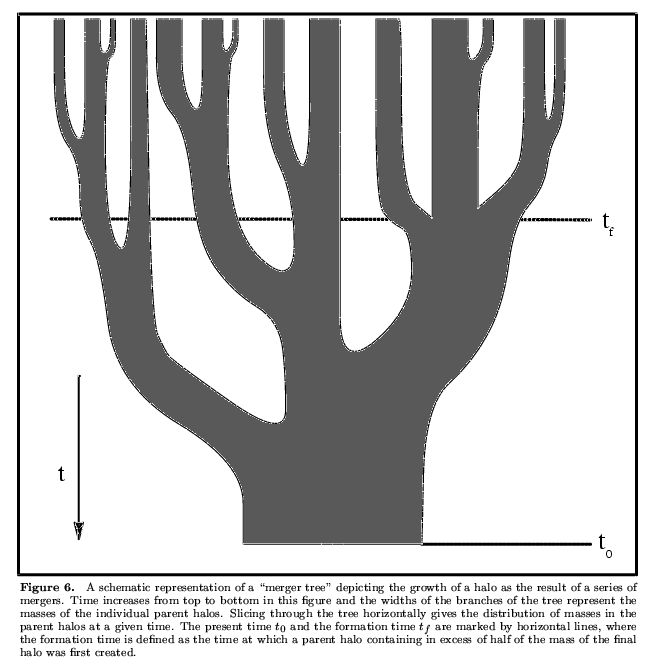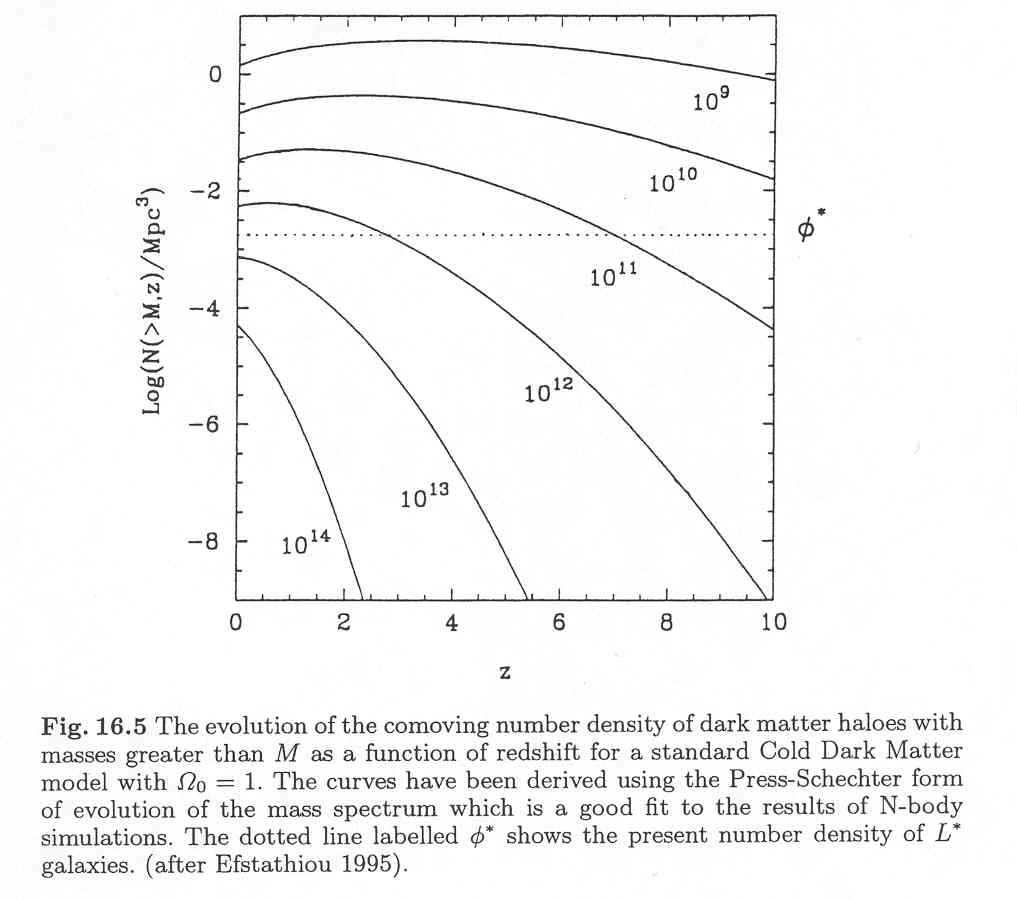Galaxy Formation
Step 1: Conceptual Theory
Think of the early universe -- there are fluctuations in the matter density on all scales, big and small. Look back at the microwave background, which shows large scale fluctuations:
These fluctuations continue down at smaller scales not visible in the CMB maps. We characterize those fluctuations by a power spectrum that looks like this:
So that the density fluctuations on small scales (smaller mass) are stronger (higher delta) than on large scales. We can think of this as each region of the universe being characterized
by its own set of cosmological parameters due to differences in OmegaM.
So some regions will recollapse quickly and form galaxies and galaxy
clusters, while others will have low OmegaM and not collapse at all
(voids).
Since high density things collapse fastest (short free-fall times), this leads to hierarchical growth of structure as small things form first and then are drawn together by gravity to make bigger things. Schematically, we think of galaxy growth looking like this:
Note that this has a number of important meanings:
- The concept of a "formation time" for a galaxy is ill-defined. In the example above, the formation time (tf) is simply the time at which the galaxy had half of its final total mass in a single object.
- Defined this way, a galaxy's stars can be older than the galaxy itself. Stars form early, in small proto-galaxies, but only later do these protogalaxies merge together to form the main galaxy.
Galaxy dark matter halo masses as a function of redshift (remember, we think our galaxy has a halo mass of ~ 1012 Msun):
Step 2: Computational Simulations showing hierarchical galaxy formation




